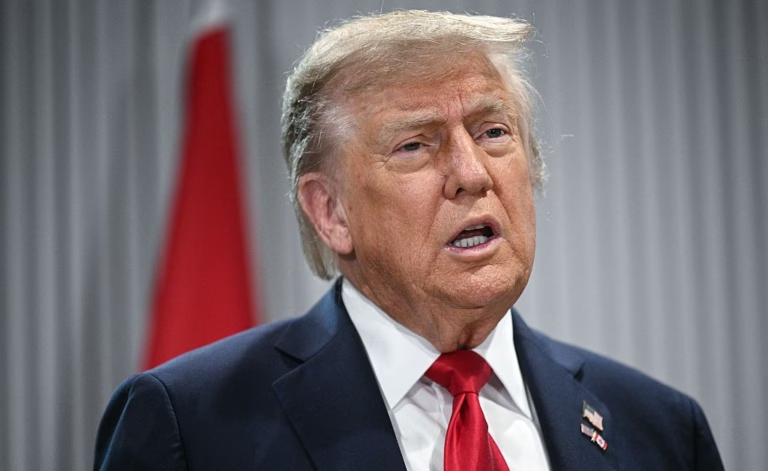Shares plummeted worldwide on Monday as higher U.S. tariffs and a backlash from Beijing triggered massive sell-offs. European shares followed Asian markets lower, with Germany’s DAX falling 6.5% to 19,311.29. In Paris, the CAC 40 shed 5.9% to 6,844.96, while Britain’s FTSE 100 lost 5% to 7,652.73. U.S. futures signaled further weakness ahead. The future for the S&P 500 lost 3.4% while that for the Dow Jones Industrial Average shed 3.1%.
On Friday, the worst market crisis since COVID escalated as the S&P 500 plummeted 6% and the Dow plunged 5.5%. The Nasdaq composite dropped 3.8%. Late Sunday, Trump reiterated his resolve on tariffs. Speaking to reporters aboard Air Force One, he said he didn’t want global markets to fall, but also that he wasn’t concerned about the massive sell-offs, adding, “sometimes you have to take medicine to fix something.”
Tokyo’s Nikkei 225 index lost nearly 8% shortly after the market opened and futures trading for the benchmark was briefly suspended. It closed down 7.8% at 31,136.58. Among the biggest losers was Mizuho Financial Group, whose shares sank 10.6%. Mitsubishi UFJ Financial Group’s stock lost 10.2% as investors panicked over how the trade war may affect the global economy. The idea that there’s so much uncertainty going forward about how these tariffs are going to play out is really driving this plummet in the stock prices, said Rintaro Nishimura, an associate at the Asia Group.
Chinese markets also tumbled. Hong Kong’s Hang Seng dropped 13.2% to 19,828.30, while the Shanghai Composite index lost 7.3% to 3,096.58. In Taiwan, the Taiex plummeted 9.7%. E-commerce giant Alibaba Group Holdings fell 18% and Tencent Holdings, another tech giant, lost 12.5%. South Korea’s Kospi lost 5.6% to 2,328.20, while Australia’s S&P/ASX 200 lost 4.2% to 7,343.30, recovering from a loss of more than 6%.
Asia is especially dependent on exports, and a large share go to the United States. Beyond the market meltdown, the bigger concern is the impact and potential crises for small and trade-dependent economies, said Gary Ng of Nataxis. It’s crucial to see whether Trump will reach deals with most countries soon, at least partially. Oil prices also sank further, with U.S. benchmark crude down $2.03 at $59.96 per barrel. Brent crude, the international standard, gave up $2.03 to $63.55 a barrel. Exchange rates also gyrated. The U.S. dollar fell to 146.24 Japanese yen from 146.94 yen. The euro rose to $1.0970 from $1.0962.
Market observers expect investors will face more wild swings in the days and weeks to come, with a short-term resolution to the trade war appearing unlikely. The Trump administration showed no signs of relenting on the tariffs that have caused trillions of dollars in losses. Appearing on Fox News Channel’s “Sunday Morning Futures,” White House trade adviser Peter Navarro echoed the president when he said investors shouldn’t panic because the administration’s approach to trade would usher in “the biggest boom in the stock market we have ever seen.”
Source: https://time.com/7275386/global-markets-tumble-trump-tariffs-china/








